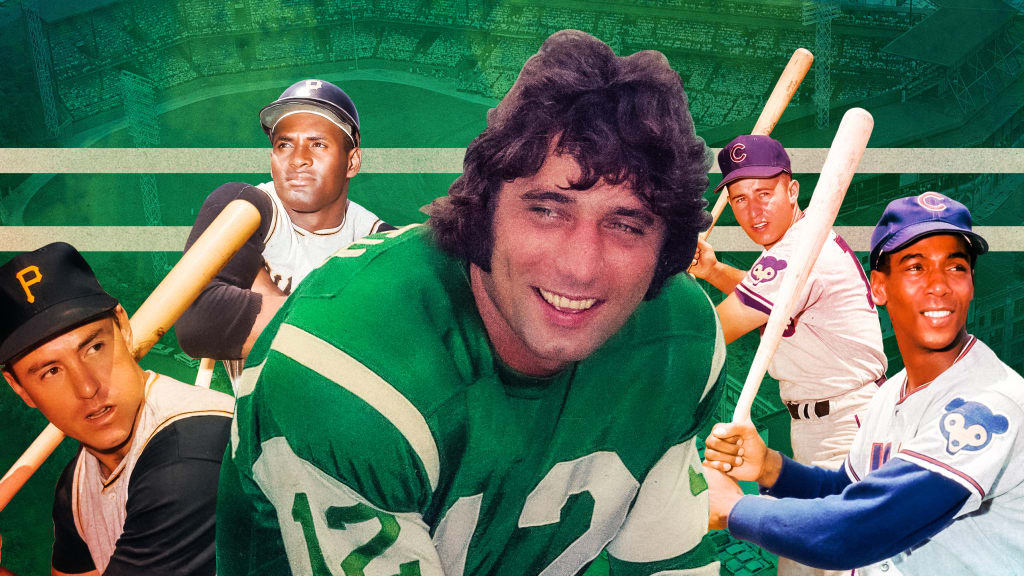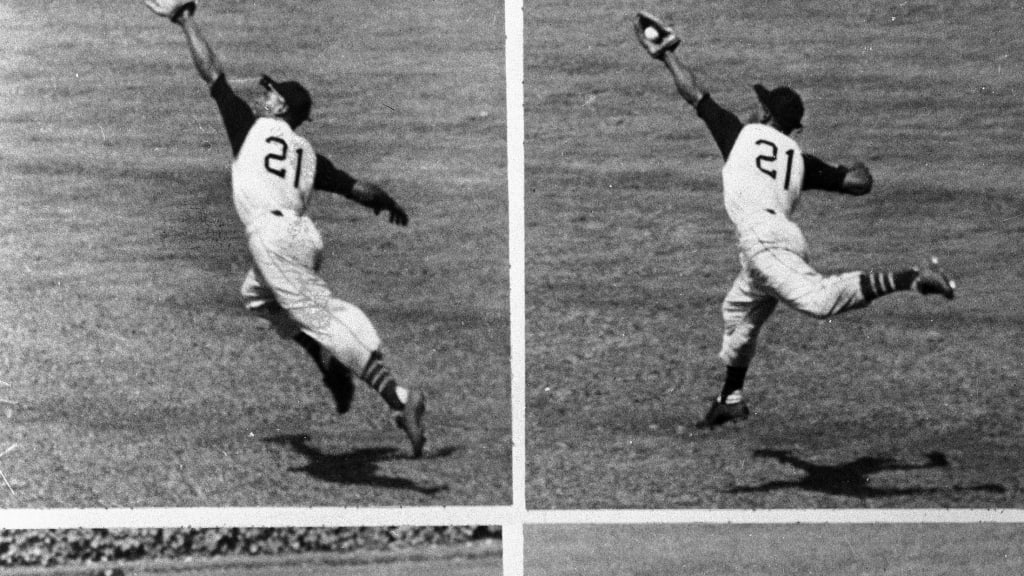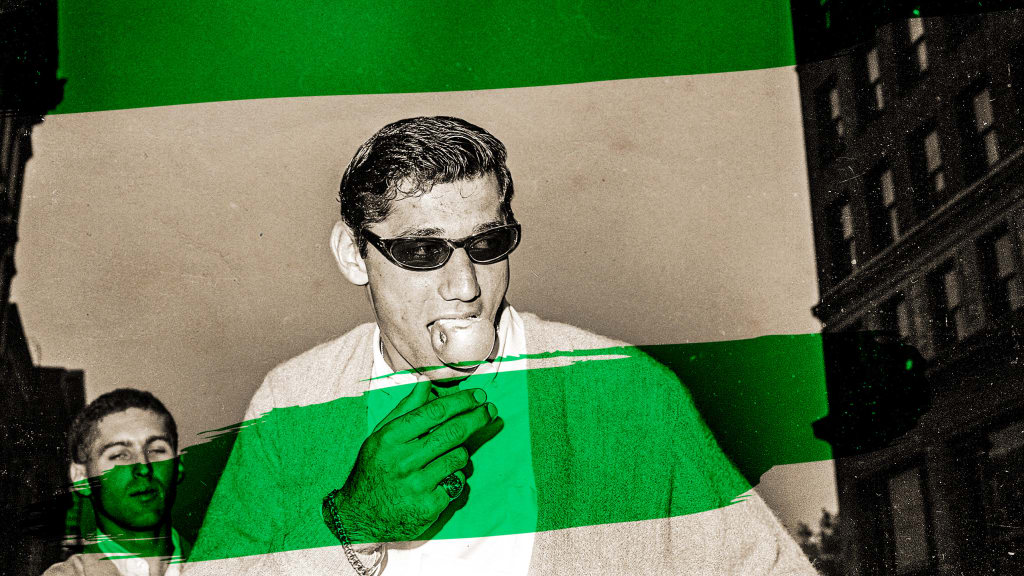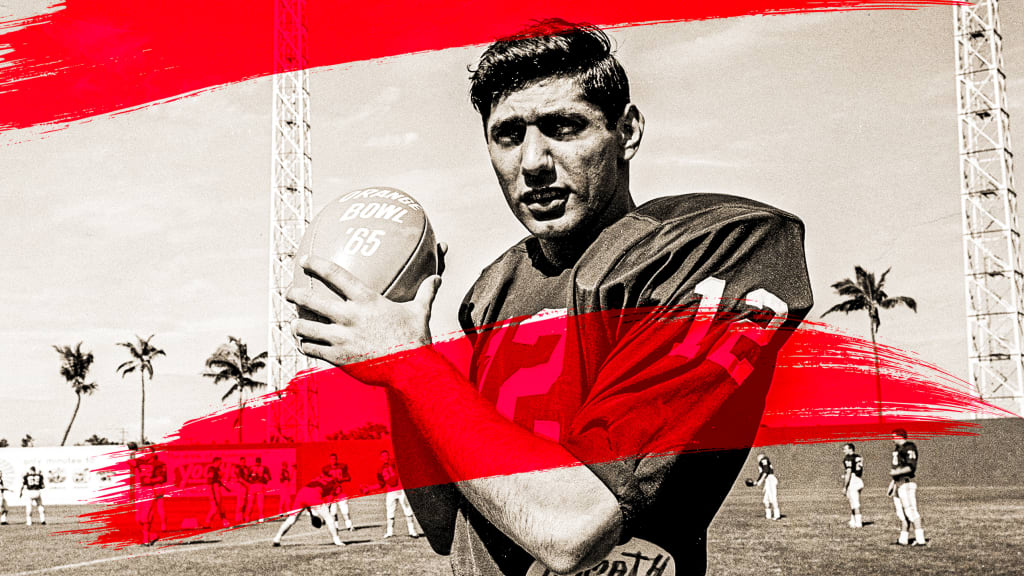
When Bill Mazeroski launched a walk-off home run to win the 1960 World Series at Forbes Field in Pittsburgh, an iconic moment was born: The baseball sailing over the ivy-covered wall as Yogi Berra’s chase morphed into a dejected jog back to the visitors’ dugout is an image embedded in the minds of baseball fans everywhere.
About 30 miles north of where that was taking place, a 17-year-old high school baseball player was jubilant -- his beloved Pirates had just upset the heavily favored Yankees in a seven-game series that put the “Classic” in “Fall Classic.”
Less than a year later, that high school outfielder was in the very same batter’s box as Mazeroski was in when he connected for the historic homer. The prep star was taking swings during batting practice ahead of the Western Pennsylvania Interscholastic Athletic League high school baseball championship between Beaver Falls and Elizabeth Forward.
As he took his pregame cuts, Joe Namath was living a dream.
“One of my highlights was being able to hit one out in batting practice over the left-field wall at Forbes,” Namath said. “My teammates got a big kick out of that.”
Surely, his teammates were jokingly uttering the name “Namath” in the same breath as “Mazeroski” as it became clear the ball was loosely following the path of the most celebrated home run in Pirates history. Little did they know that Namath would someday eclipse their beloved “Maz” in athletic fame while under the brightest of lights in New York City.
Namath went 2-for-3 in the championship game to lead Beaver Falls to the WPIAL title, the first in school history. And that was after he hit .450 during the regular season.
“I tried to hit everything I could,” Namath said. “It just so happened that in a couple of championship games I was able to connect with the long ball.”
Namath delivering in the clutch with a championship on the line? Where have we heard that before?
With his resume capped by a league title, Namath had his eye on his ultimate goal: to become a Major League ballplayer.
Sure, he was a tremendous high school quarterback, not to mention a standout basketball player. But long before he famously won Super Bowl III over the Baltimore Colts after guaranteeing his underdog Jets would be victorious, and long before he became “Broadway Joe,” one of the most famous quarterbacks in pro football history and one of the most recognizable athletes on the planet, baseball was Namath’s first love. And Roberto Clemente was his hero.
“As a kid, maybe 11 or 12 years old, I started watching Roberto,” Namath said. “He just was so graceful to me, the way he ran and the way he’d slide into third or second -- he’d start that slide about five yards away, man. Oh, he was just wonderful. And catching the ball -- I even mimicked his style of catching a fly ball, which was similar to Willie Mays’ basket catch, but it was because of Roberto that I used it so much.”

It was Namath’s older brother, Bob, who would take him down to Pittsburgh and the old ballpark from time to time as a youngster, and one game stands out among the others in Joe’s mind.
“I’ll never forget it,” Namath said. “It was like the bottom of the eighth and the Pirates were down,” Namath said. “They didn’t do anything that inning and Bob wants to leave to beat the traffic. And I didn’t wanna go, but your big brother, you know, you listen to him.
“So we get in the car and turn on the radio, and we’re driving out and darned if the Pirates don’t come back and win it! And we’re driving along and cheering. And I was a little upset with Bob. Of course, he was a little upset with himself.”
Another game that Namath never forgot was played on May 22, 1956, when the Pirates hosted the Cardinals. It turned out to be the fourth straight game in which Dale Long would homer en route to a record eight consecutive games with a roundtripper for the Bucs’ first baseman.
For young Joe Namath, there was so much to take in: not only the Long home run and seeing the legendary Clemente out in right field, but getting the chance to watch Stan Musial hit. “The Man” would go down as one of the greatest sluggers in the game’s history, smashing 475 home runs and winning three National League MVP Awards, seven NL batting titles and three World Series rings with St. Louis during a 22-year Hall of Fame career.
“‘Stan the Man’ was in the box, and boy, he hit a shot into the outfield to score a run,” Namath said. “I’m so glad I got to meet and visit with Stan ‘The Man’ Musial later on in my life. He was always so sweet. I’ll never forget meeting him at Oakmont [Country Club] for a golf tournament with Arnold Palmer. He was so soft and gentle and had a smile that just made you feel so good.”

Namath was in love with baseball much like countless other 12-year-old boys growing up in 1950s America, particularly those who had the opportunity to watch superstars like Clemente and Musial in person. Five years later, his plan was on track: Major League scouts were noticing him.
During one high school game in 1961, Namath looked up in the stands behind the Beaver Falls' dugout and saw a man watching him more intently than everyone else. That man was a second-year Dodgers scout named Tommy Lasorda.
“Tommy and I talked quite a bit, even years afterward, about him coming to town,” Namath said. “Yeah, Tommy was scouting me out -- every time I would see Tommy in later years, we’d talk about it. He remembered my hometown and sitting in the bleachers and all kinds of stuff.”
There was no MLB Draft back then; it wouldn’t be established for another four years. The Dodgers never ended up offering Namath a professional contract, but there were four MLB clubs that did: the Athletics, Orioles, Cubs and Cardinals.
The Cardinals scout who recommended that St. Louis offer Namath a contract was Ollie Vanek. Vanek’s greatest find was a high school pitcher out of Donora -- a small town just south of Pittsburgh -- whom he convinced the Cards to turn into an outfielder (and later a first baseman). His name was Stan Musial.
But St. Louis’ offer to Namath wasn’t the biggest. The Cubs held that distinction, offering him $50,000 (about $500,000 today). It was enticing, and Namath wanted to take it and begin the pro baseball career he had dreamed about for years.
“Getting an offer for the amount of money Mom and Dad would have to work 10 years for, that was a big amount of money back in 1961,” Namath said. “And I loved the game.”
Of course, there was more to the decision than what Namath wanted. When his dad found out what he was planning to buy with a good chunk of the money, alarm bells started going off.
“Oh, I had it picked out,” Namath said. “It was a Pontiac Starfire. It was a convertible with a white top, and it was blue, and it had this like six-inch strip of chrome along the side doors. They had it right there where you could look at it through the front window of the car shop. I used to walk by that thing and look at it and boy, it was so cool.”

The Namaths called a family meeting over the dinner table, and Bob, Joe’s older brother, took charge.
“We had a sit-down at the house with two of my brothers, my sister Rita, and my mother,” Namath said. “Bob was the oldest, and we sat down to decide what I was gonna do. And my mother’s sitting at the table and she’s not talking too much, and Bob said, ‘We’ve gotta decide here what you’re gonna do between baseball and going to college. What do you wanna do, Joe?’ And I said, ‘Well, I wanna play baseball.’
“And he looks at Mom and says, ‘Mom, what do you think?’ And she says, ‘Aww, I want Joey to go to college.’ Bob hit the table with his fist and he said, ‘That’s it. You’re going to college.’ And that was it.”
Now, the question was: where? Namath had a ton of scholarship offers to play football and considered several schools, visiting Notre Dame, Michigan State, Iowa, Miami and Arizona State. He even ended up signing a letter of intent to matriculate at another school he visited, one that was only 300 miles or so away from home: the University of Maryland.
But he didn’t go.
“I was holding out,” Namath said. “I was home when school was starting because I wanted to play baseball.”
Namath could only hold out for so long, and predictably, Mom won. But as he was preparing to leave home for Maryland, a knock at the door changed the trajectory of his life.
“It just so happened that one morning, while we’re getting ready toward the time to leave, someone came to the front door,” Namath said. “It’s a good-sized guy, and he introduced himself as Howard Schnellenberger, assistant coach at the University of Alabama.

“Well, he sold my mother on the benefit of coming to the University of Alabama, and how they’d take care of this Pennsylvania Yankee and all that stuff. And after about a half hour of talking, she went upstairs, got a suitcase and packed my clothes. I didn’t even get to pack my clothes. She reached in her purse, gave me $5 and said, ‘All right coach, you go ahead and take him.’”
Namath was off to Alabama and the rest, as they say, is history.
The Jets selected Namath with the first overall pick in the 1965 AFL draft (the St. Louis Cardinals -- the football Cardinals -- chose him with the 12th overall pick of that year’s NFL draft) and he would become a five-time Pro Bowl quarterback, the MVP of Super Bowl III and was inducted into the Pro Football Hall of Fame in 1985.
Still, Namath has often thought about what it would’ve been like if he had taken the Cubs’ offer in 1961.
In June 2018, Namath visited Wrigley Field for the first time in his life, throwing out the ceremonial first pitch to then-Cubs manager Joe Maddon. On that occasion he had a chance to tour the venerable ballpark, and the man who left so many people awe-struck over the years was himself struck with awe just outside.
“I just marveled at Ernie Banks’ statue out there by the stadium,” Namath said.
Namath and Banks could very well have been teammates had Namath stuck with baseball. Imagine a Cubs lineup with Banks, Billy Williams, Ron Santo, Lou Brock and this Namath kid everyone had been raving about.
Things turned out alright for Namath, though. While it wasn’t a diamond, but a gridiron, on which he would rise to superstardom, he nevertheless has had opportunities to live out some of his baseball dreams.
“I’m in a line at O’Hare Airport one time late in my career, waiting to get up to the ticket counter,” Namath said. “And I see this big guy in line ahead of me, and he’s got on this long black topcoat with black fur around the collar, and I kinda lean outta line and I go, ‘It looks like Ted Williams. I think that is Ted Williams!’
“So I just went up to him and tapped him on the shoulder, and he turned around. I said, ‘Mr. Williams’ -- I’ve always called him Mr. Williams -- and he said, ‘Hey, Joe! How ya doin’?’ He was warm. He was just wonderful. I’ve got a baseball of his right here on my shelf -- it says, ‘To Joe Namath, Big-League Best, Ted Williams.’”
A few years back, Namath, who runs his own charitable organization called the Joe Namath Foundation, was invited to a charity golf tournament in which baseball legends were teamed up with football legends. Namath’s partner was going to be none other than Mickey Mantle, but Mantle couldn’t make it.
So as the organizers of the event scrambled to find Namath another partner, they looked for any other team that was missing a member.
They found one: Team Mazeroski.
“It was one of the highlights of my life to meet Billy and play golf with him,” Namath said. “Man, I just couldn’t believe I was playing golf with Mazeroski. I can still see him with that wad of chewing tobacco, playing second base at Forbes Field.”
Oh, how history might have been different had Namath accepted that $50,000 offer from the Cubs 60-plus years ago. There’s certainly no guarantee he would have had as much success in baseball as he did in football -- who knows if he would’ve been enshrined in Cooperstown rather than Canton?
But it’s fun to think about, even if Namath won’t.
“I wouldn’t even dare to consider that,” he said. “That’s not the way my brain works. I could’ve only hoped to make a team and play well and live the life.”
He lived the life in football. And maybe he would’ve done it in baseball, too. We can only imagine. But one thing is certain: Namath’s heart was intercepted by baseball long before he became a football legend.
“I do still think about it sometimes, what it would’ve been like if I stayed in and all,” he said. “I just loved the sport.”
